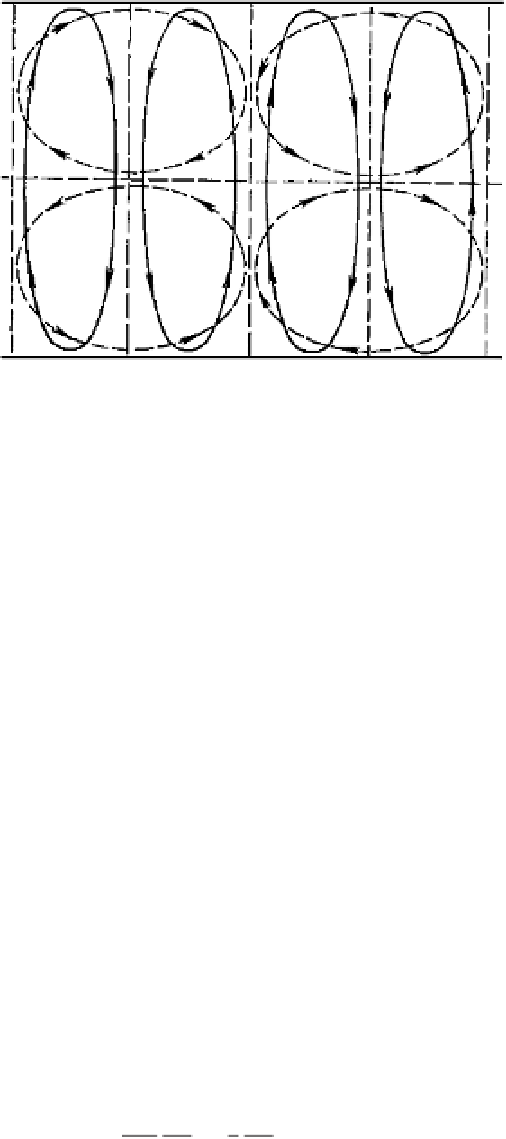Environmental Engineering Reference
In-Depth Information
4
.Themix-
ing of the gas fluxes traveling in opposite directions finally results in random gas motion, or
turbulence. Regions of countercurrents are marked.
Figure 5.2
The types of convective motion in the Rayleigh problem for Ra
D
108
π
direction in some region of the gas volume. Then in other regions these flows
must move in opposite directions. The existence of two solutions with opposite di-
rections of the gas flow does not mean that the ordered flow of a gas is disturbed.
A combination of two solutions is itself a solution. For opposite gas flows, a com-
bination means that at some points the gas is motionless. Nevertheless, the fact
that an increase of the Rayleigh number gives rise to new types of solutions means
that the convective flow can become turbulent. Assume that there is an ordered
convective flow in the system corresponding to one of the solutions. Then a small
perturbation in one of the regions of the gas volume gives rise to different types
of flow. At the boundary of this region two opposite gas flows meet, so the kinetic
energy of motion of the gas is transformed into thermal energy of the gas. This
results in disordered motion. The development of turbulence changes altogether
the character of heat transport.
We can estimate the thermal conductivity coefficient in a plasma or hot gas with
developed turbulence. For example, turbulent flow can occur in a column of hot gas
resulting from the passage of an electric current through it, and the temperature
evolution of this column is of interest. We add the force of an external field directed
perpendicular to the temperature gradient (as in the case of lightning in air), so the
transport of heat occurs over small distances. We assume that a typical transverse
size
r
of the column is large compared with a typical size
l
of small vortices, as
determined by (5.8) and (5.10), giving for atmospheric air
gl
3
ν
D
gl
3
ν
D
Δ
T
T
l
r
10
3
Ra
.
In this case the thermal conductivity coefficient is given by estimate (4.40),
N
l
,where
l
isthemeanfreepathforvorticesand
v
is a typical velocity in the
fluxes. The value of
v
is obtained from the Navier-Stokes equation (4.15) as
v
(
gl
)
1/2
. The Reynolds number Re
v
D
v
l
/
ν
for these motions can be estimated from

